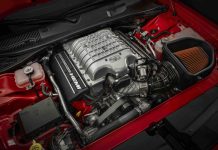Here’s the latest reader question, along with my reply!
John asks: Your article (about obese cars, see here) was spot on! However the other important factor is air drag. The slipperier the car is the less fuel it uses to push through the air, particularly as the speed increases. NASCAR vehicles have a drag factor of 2.4. I would like to know the drag factor of the vehicles you quote. I drive a 1989 Alpine GTA Turbo, a French Supercar, which uses a 2.5 liter turbocharged, fuel injected engine. It also weighs 1,100 Kilograms (2,640 lbs.) over 200 BHP, but has a drag factor of 2.8.
Loved your summary; spot on about weight, every model gets heavier and then the manufacturers produce a new model that is around the same size and weight as their original.
My reply: I don’t doubt drag is another factor behind the piggishness of many new cars, especially jacked-up crossovers – which have become the most popular type of new car in the United States.
The other day, as I was driving home, I found myself in traffic along with a 1978 Camaro – which was just ahead of me. The car was literally half as tall as the cars around it. It looked like a Lamborghini Miura relative to them – in terms of how low it sat relative to them. Much less daylight underneath the Camaro, too.
It is striking how much the shape – and height – of cars has changed over the past 30 years. And it partially explains their thirst.
…
Got a question about cars – or anything else? Click on the “ask Eric” link and send ’em in!
If you like what you’ve found here, please consider supporting EPautos.
We depend on you to keep the wheels turning!
Our donate button is here.
If you prefer not to use PayPal, our mailing address is:
EPautos
721 Hummingbird Lane SE
Copper Hill, VA 24079
PS: EPautos magnets are free to those who send in $20 or more. My latest eBook is also available for your favorite price – free! Click here. If you find it useful, consider contributing a couple of bucks! 











